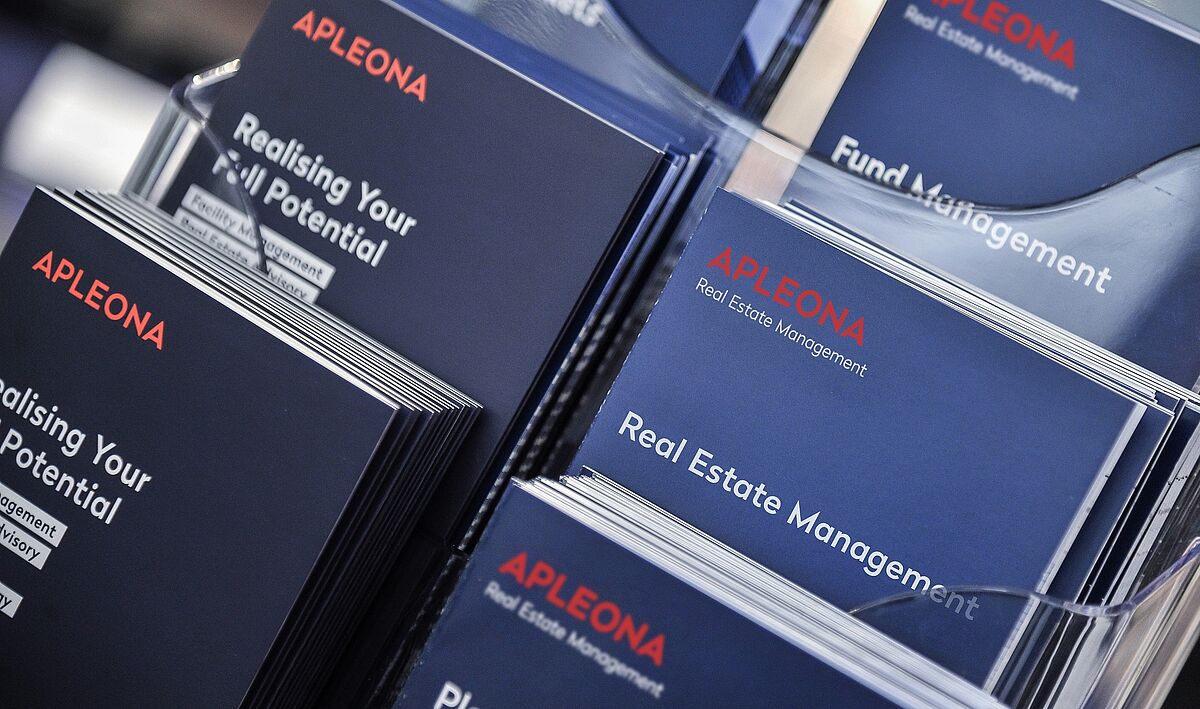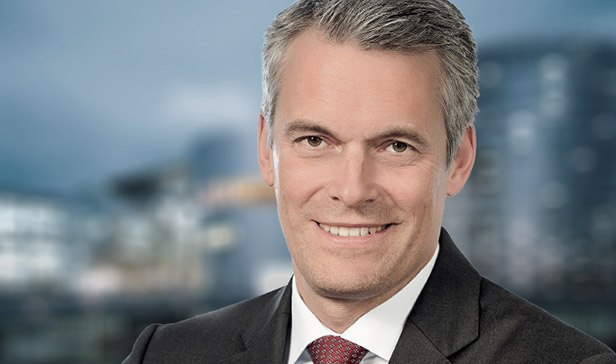Interview with Carsten Kreutze
Starting from February, it was official: Apleona acquired an interest in the Bonn-based green tech company Recogizer. Now, more than half a year later, Managing Director Carsten Kreutze reports on his product and the welcome his company has received from Apleona.
With its “energyControl” AI system, Recogizer generates average energy savings of 20% to 30% and a comparatively large reduction in CO2 depending on the energy supply situation. In this interview, Managing Director Carsten Kreutze reports on what this is all about, what role artificial intelligence plays, and much more. Read the full interview here:
How exactly does the Recogizer software work and what benefits does it have for the user?
The Recogizer technology is a self-learning software for optimizing energy use in existing buildings. It reduces energy consumption and CO2 emissions in offices, administrative space, and retail space, for example. Using artificial intelligence, we take existing HVAC technology to a new efficiency level – with anticipatory, needs-based control that is optimized in a 15-minute cycle. Factors that significantly affect energy consumption are actively included: weather forecasts and building occupancy in the form of actual data, profiles, or plans, as well as usage times.
Energy savings of up to 30% can thus be achieved without requiring manual work from the operator. Not least of all, the innovative technology is a valuable component for sustainability strategies at companies in order to implement ambitious climate goals.
Why do we call this artificial intelligence (AI), what exactly does that mean?
Generally speaking, artificial intelligence is used to automatically identify certain connections in data. These are then transferred to a structured model, allowing the knowledge gained to be applied to the same or similar areas. Well-known application areas include search engines and voice/image recognition on smartphones. To be able to cover a large application area, we need training datasets in which as many different situations as possible are already mapped.
In the context of our solution, this means that we start by gathering data for the building in question during a learning period. This data is then transferred to a digital twin, which establishes connections between complex influences: the weather and user data mentioned earlier, facility-specific data, and comfort parameters such as the room temperature. Over time, the digital twin keeps learning more and more. The optimum control for the next few hours is predicted with 15-minute updates to ensure the ideal desired room temperature throughout the building with the lowest possible energy consumption.
Are customers actually willing to release energy-specific data that could be traced back to their user behavior?
Energy consumption and building data are provided by the customers without reservations, as there is a clear objective relating to energy efficiency. It is never possible to trace data back to individual user behavior, since all data relates to the property. It does not represent personal data. For example, it is known only how many people are in the building at a certain time, but never who these people are.
Are there already examples of best practice, and are you achieving the promised effects here?
In recent years, we have gained customers from a variety of sectors: office properties, retail, hotels, industry, and educational establishments. This includes the whole range from low-tech administrative buildings to high-tech office complexes. We regulate everything from administrative buildings with limited, older technical equipment to large corporate headquarters incorporating tens of thousands of data points. For both low-tech and high-tech buildings, the savings range between 15% and 30%. One example from the area of schools is a vocational college covering more than 8,000 m². It is important for there to be an automation level in the building.
The fashion company Breuninger uses our self-learning technology at its store in Freiburg, where it has saved 640,000 kWh and 235 tons of CO2 in the space of two years. In addition, Breuninger managed for the first time to achieve its target temperatures on some floors where it had always been too hot in the summer. Implementation is currently underway at other branches.
Have you had a good start at Apleona, and are there any initial results from the collaboration yet?
The whole Recogizer team was very pleased about the new partnership at the start of the year – our welcome into the Apleona family was a very positive experience. We are already working together in different areas. The main focus is undoubtedly on communicating our services internally as part of Apleona’s digitalization initiative and jointly presenting them to selected customers. There is a high level of motivation among all colleagues; working together is fun and is also bringing tangible benefits in the form of initial orders thanks to fresh impetus. Besides the sales drive, we have also made good connections with our colleagues from Communications and Marketing and have held our first events together, for example.
Are you currently hampered by the COVID-19 pandemic or is there demand and are sales activities working?
Generally, we are not hampered as a company because we can work together virtually and seamlessly from home. We are well equipped in terms of our IT infrastructure, which made the transition to working from home very easy. We have now returned to the offices again in a rotating system and are currently combining working from home with working on site. With regard to demand, we naturally saw a decline in the retail and hotel segments in the first half of the year due to the crisis. On the other hand, we have observed that the crisis is actually helping to boost sustainability initiatives in some cases. Our innovative digital solution is currently seeing particularly high demand from many customers, as tangible savings can be achieved and the solution can be rolled out to several buildings.
How important do you think digitalization is for energy and CO2 optimization as compared to other measures such as building insulation?
For older buildings in particular, there are several possibilities for optimization. If you work on the building envelope, for example, very high investments are required and payback periods can often exceed 10 or 15 years. Replacing technical equipment pays off somewhat faster, after around 5 to 8 years. Unfortunately, both measures generally involve an interruption of business operations. Optimizing HVAC systems with artificial intelligence opens up completely new horizons in terms of both time and money: short payback periods in the first year of operation and significant long-term savings with the digital approach. In practice, we sometimes also see a combination of different measures, such as (partial) retrofitting of equipment supplemented with our AI control.
Can the data gathered by Recogizer, and the technology as a whole, also be used for other innovative solutions such as predictive maintenance of HVAC equipment?
In principle, there are certainly possibilities to use the operational data gathered from the technical equipment for other applications, too. Predictive maintenance, which predicts upcoming breakdowns of systems or individual components, can be handled on a data-driven basis using AI. For example, wear and tear of equipment could also be detected at an early stage in this way, allowing wear parts to be replaced early and downtime to be avoided. The data quality is crucial for these solutions, too. We are looking forward to interesting dialog with Apleona and our customers to identify additional application areas and potentially develop further intelligent solutions for these.


